In the world of guitar pedals, reverb is perhaps the most versatile and dramatic tool at your disposal. Used well, reverb pedals can transform your guitar sound, adding depth, dimension and air to your music.
In this article, we’ll trace the origins and evolution of reverb, from its earliest beginnings in recording studios through to its most modern incarnations. This history will help you to better understand what reverb is, how it can affect your guitar tone and the various types of reverb that are available in the market today.
If you're interested in learning more about some of today's most popular reverb offerings, check out The Best Reverb Pedals of 2024.
Table of Contents
What Is Reverb?
Delay vs. Echo vs. Reverb Effects: What’s the Difference?
The History of Artificial Reverb
Types of Reverb
Spring Reverb
Plate Reverb
Emulating Spaces: Room, Hall and More
Taking Reverb Beyond Spring Tanks and Big Studio Installations
Enter Roland’s Space Echo
Taking Reverb Digital: The EMT 250
The Lexicon Effect: Taking High-End Reverb to the People
The Reverb Pedal is Born
What is Convolution Reverb?
Rounding up Modern Reverbs
In Closing
What is Reverb?
If you've ever honked your car horn in a tunnel or marveled at your singing voice in the shower, you've experienced reverb. Reverb refers to the way a sound persists after it is produced. Typically, we only notice reverberations when they’re extremely present or absent. Narrow hallways, vast halls and churches with vaulted ceilings produce reverb that’s hard to miss. Likewise, recording studios designed for minimal sound wave reflections bring our attention to the “deadness” of their air.
Understanding how reverb works is fairly simple. As sound waves are generated, they travel outward from their source in every direction until they collide with surrounding surfaces. The nature and distance of these surfaces, such as the floor, walls, ceiling and furnishings, determines how the sound waves are reflected or absorbed. Until they are fully absorbed by the environment, these waves bounce around. This creates what are called late reflections. Basically, all reverb effects depend on a mixture of early and late reflections.
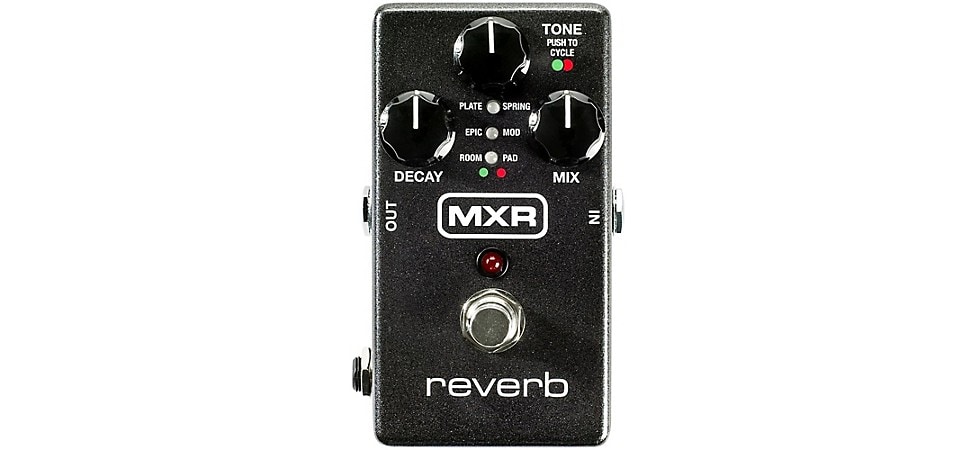
Pictured: MXR M300 Digital Reverb Pedal
Our ears and microphones first hear the sound coming directly from the source, and then detect the complex of reflected sounds microseconds later. There are differences of opinion among acousticians and reverb effects manufacturers about the reality of the aforementioned early reflections. These are the reflected sounds that reach our ears somewhere between 5-100ms after the initial sound waves. Late reflections are an accumulation of early reflections. How long they take to decay and become inaudible is an important part of what’s called the reverb’s tail—the trailing off of its sound.
Delay vs. Echo vs. Reverb Effects: What’s the Difference?
Acoustically speaking, delay isn’t that far off from reverb. Delay effects allow you to adjust the number of repeats and the time between them.
Echo, unlike reverb and delay, consists of a single reflection off a surface. Reverb occurs when multiple echoes bounce off multiple surfaces. The numerous reflections layer, creating what our ears perceive as reverb.
The History of Artificial Reverb
Naturally occurring reverb effects have been around forever. Architects designing symphonic halls worked hard to balance reverb’s air and drama with its tendency to muddy acoustics and garble vocals.
But it wasn’t until the late 1940s that studio engineers started refining primitive techniques like setting up mics in narrow hallways or tiled bathrooms. Legendary producer and studio owner Bill Putnam, who would go on to found Universal Audio, took this sort of idea a step further. By placing a mic and speaker in a studio bathroom, Putnam had much greater control over the reverb effect. Used liberally on the 1947 instrumental “Peg o’ My Heart” by the Harmonicats, it produced an otherworldly sound that helped push the single to the top of the pop charts. Putnam had achieved a huge sound that stood out.
Types of Reverb
Putnam’s innovation soon led to other developments in artificial reverb equipment. Chamber reverberators like his had a drawback: adjusting reverb times was difficult. To overcome that problem, new gear began appearing.
Spring Reverb
Spring reverb was originally developed by Hammond to add “air” to its '40s and ‘50s electronic organs, simulating the natural reverb of a cathedral pipe organ. Instead of the signal bouncing off a cathedral's walls, Hammond sent it through two springs, converting that vibrational energy back into a signal to be amplified. The stronger the vibration, the deeper the reverberation. Introduced in 1959, the Type 4 "reverb tank" (later renamed the Accutronic) featured two long springs mounted in a 16" case. Countless combo guitar amps have since incorporated the classic Accutronic sound.
Notably, Hammond’s spring reverb was licensed by Fender for their own standalone reverb tank, introduced in 1961. Then, in 1963, the company debuted its first guitar amplifier with a spring reverb unit aboard—the Fender Vibroverb.
Spring reverb soon became a vital ingredient in the sound of early surf music, led by pioneering artists such as Dick Dale and The Beach Boys. This emerging sound led to other guitar amp companies jumping into the fray, developing their own unique designs, many of which are still in use today.
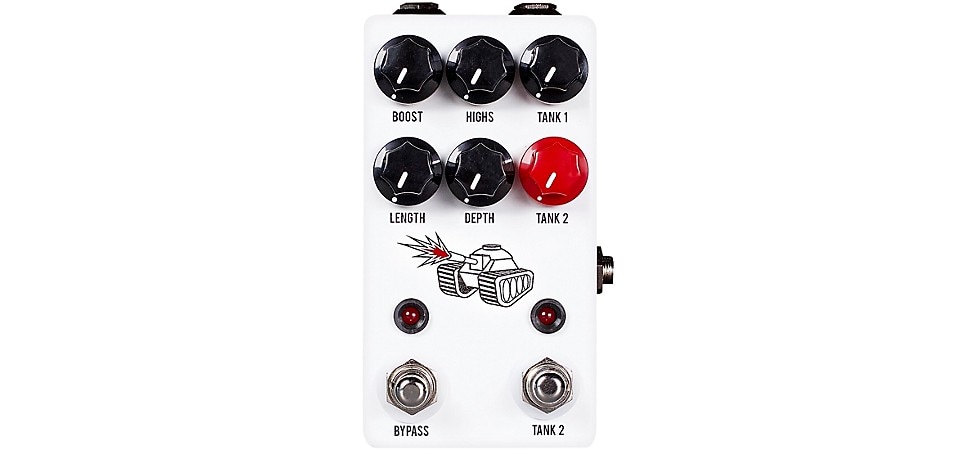
Pictured: JHS Pedals Spring Tank Reverb
While many modern guitar amps feature onboard spring reverb these days, both real and digital, there are a number of great pedals out there that offer authentic emulations to drench your guitar in.
The JHS Pedals Spring Tank Reverb offers true amp-style spring reverb with the added bonus of tweakable EQ and boost, plus a footswitch-activated "Tank 2" reverb setting, so you can easily change your sound on the fly.
Okalahoma City-based Keeley Electronics offers the Hooke Spring Reverb which offers a total of 6 unique spring sounds including a classic spring reverb, a mid-60s Fender 'Verb and Trem and an organ-inspired tank. Four onboard controls allow you to dial in just the right amount of drip, clang and splash to soak your sound in.
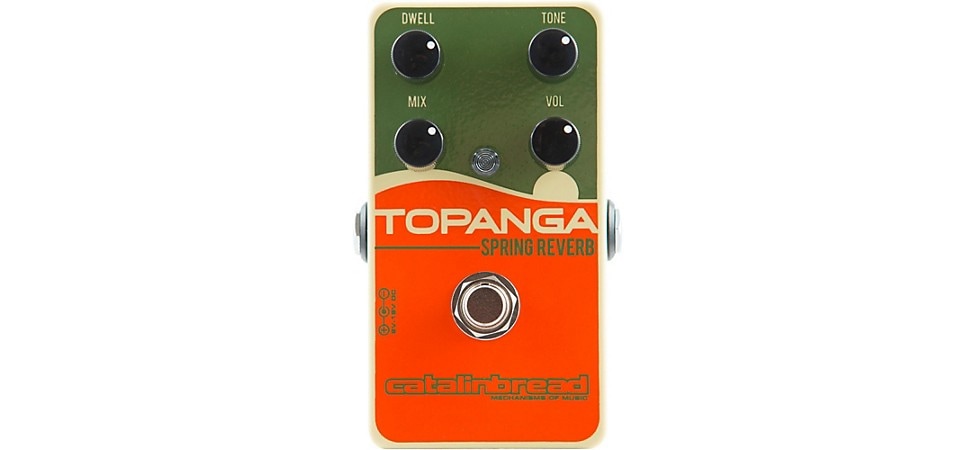
Pictured: Catalinbread Topanga Spring Reverb
Looking for something more straightforward? In that case, the Catalinbread Topanga draws inspiration from the legendary Fender 6G15 outboard spring reverb and delivers classic '60s sounds and the simple control of one oversized knob you can turn easily with your foot.
Plate Reverb
Plate reverb was introduced in 1957 by German manufacturer EMT. The groundbreaking EMT 140 Reverberation Unit sent the signal through an enormous 8' x 4' steel plate, causing it to vibrate. A dampening plate, hung parallel, allowed the engineers to control the reflection time. The EMT 140 was smoother and more natural sounding than Hammond's springs, but it weighed a quarter ton.
The sound of these and other classic plate reverbs has been authentically recreated in plug-in form by companies such as Universal Audio, Waves and Arturia. But if you’re looking to bring the plate reverb sound to your pedalboard, there are a number of fantastic options to choose from.
For the guitarist looking for a truly authentic plate reverb pedal for their board, Universal Audio's Heavenly is a solid choice. Heavenly offers up three variations of the legendary EMT 140 (Vintage Bright, Vintage Dark and Full) with five on-board controls (Decay, Mix, Pre-Delay, EQ and Modulation) to shape your sound.
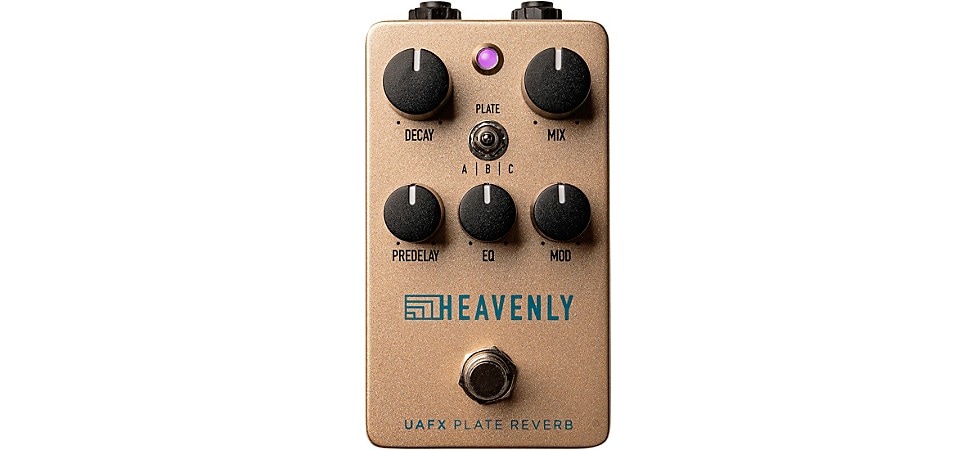
Pictured: Universal Audio UAFX Plate Reverb
Emulating Spaces: Room, Hall and More
Room reverbs are designed to replicate the natural reverb of a room whose acoustics are ideal for recording certain types of music. Rock fans consider the natural acoustics of studios such as Abbey Road and Ocean Way the gold standard for achieving big, dynamic, rock drum and guitar sounds. Room reverbs found in some plug-ins are designed to capture those same recording-friendly dynamics.
Hall reverbs are essentially the same as room reverbs, but on a much larger scale. They offer longer reverb times, and some are modeled on performance halls and theaters revered for their acoustics.
The Fender Marine Layer Reverb pedal has a 3-way toggle to choose from Hall, Room or “Shimmer” reverbs that drench your performance with highly musical reflections. Pre-Delay, Time, Damping and Level knobs combine with Variation and Filter on/off toggles for plenty of hands-on control.
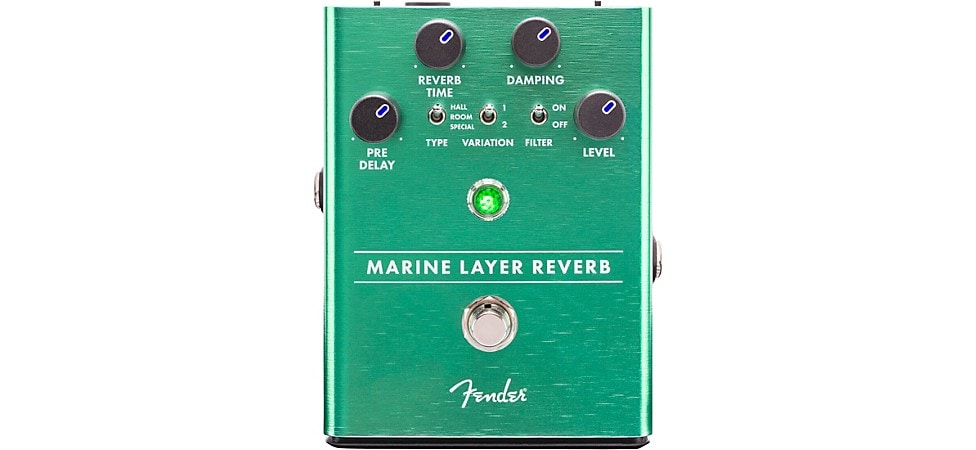
Pictured: Fender Marine Layer Reverb
Chamber, stadium and cathedral reverbs bear names that signal what they do. Chamber reverbs simulate spaces that fall between rooms and halls in scale. Stadium reverbs mimic the enormous delay effect found in real-world stadiums. Reverbs based on cathedral acoustics simulate their many hard, reflective surfaces, producing dense effects. In absence of the modern digital simulations that we have today, these reverberations would've been arduously captured in the spaces they're named after.
Taking Reverb Beyond Spring Tanks and Big Studio Installations
With the prohibitive cost and size of plate reverbs, audio gear manufacturers turned to magnetic recording tape as a more portable, affordable medium. Recording engineers had long been experimenting with creating delays and reverb effects by manipulating their tape machines. Primitive techniques, such as slowing down the recorder’s transport system, produced interesting delays. But these tricks were difficult to control and replicate.
Enter Roland’s Space Echo
Recording engineers were hungry for reverb and delay effects that didn’t require dedicated spaces or expensive gear. Emerging Japanese technology answered that call in the 1970s with a number of studio- and stage-friendly effects. Most notable among these was the Roland Space Echo.
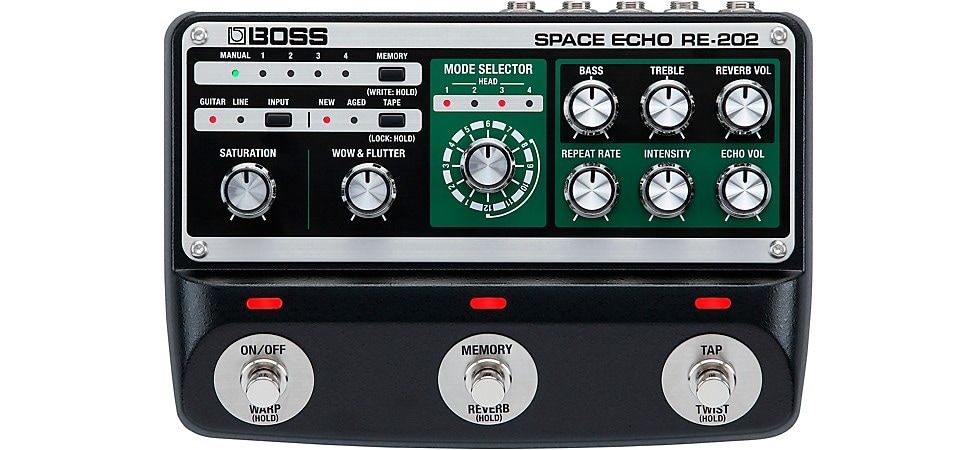
Pictured: BOSS RE-202 Space Echo
Inspired by the U.S.-made Maestro Echoplex that used closed-loop recording tape and movable heads to manipulate delay times, Roland introduced its breakthrough RE-101 and RE-201 Space Echo units in 1974. Notably, the RE-201 included a spring reverb tank. Both models used a 1/4" tape loop driven by a capstan. The loop, contained in loose jumbles, was more durable than designs using tape reels. The Space Echo also reduced wow, flutter and noise. A standby mode when reverb effects were not needed also helped extend tape life. The Space Echo soon became the delay and reverb of choice for the emerging dub music scene.
Today, you can command all the Space Echo’s revered sounds with the BOSS RE-202 Space Echo or the BOSS RE-2 Space Echo. It captures the spacious analog ambience of the original unit, dispensing with all the tape hassles while recreating the authentic sounds of saturated tape heads and tape flutter.
Taking Reverb Digital: The EMT 250
EMT, the company that introduced plate reverb, rocked the audio world in 1976 with the EMT 250, arguably the first digital reverb unit. The EMT 250 was a brilliant example of German industrial design. But it was the algorithms that emulated three-dimensional acoustic behavior that were truly revolutionary. The design employed 400 integrated circuits, requiring three fans to manage the high temperatures generated by its circuitry. It wasn’t cheap either. At $20,000, and limited to a mere 250 units, the EMT 250 was intended for cutting-edge studios. Incorporating chorus and phaser effects, four slider controls gave the unit excellent tactile qualities and looked like something out of a jet fighter cockpit. Each slider controlled one of the EMT 250’s four discrete outputs.
Though the EMT 250 may now seem antiquated, its many innovations paved the way for the reverb pedals of today.
The Lexicon Effect: Taking High-End Reverb to the People
In 1979, U.S.-based Lexicon entered the digital reverb market with its game-changing Model 224. Selling for about half the price of the EMT 250, it offered similar, if sonically different, reverb options that were an instant hit with record producers.
![]()
In the mid-1980s, Lexicon introduced the more affordable rack-based PCM Series with the PCM-60. Later iterations would include multi-effects and a MIDI interface. The introduction of the LXP series in the 1990s finally brought the cost of a versatile reverb effects processor within the reach of consumers and project studios. Today, these landmark digital reverbs are available in plug-in format as the PCM Native Reverb Bundle and the LXP Native Reverb Bundle.
The Reverb Pedal is Born
With a little practice and the right setup, rack-based reverbs and other effects can be triggered by guitarists, both in the studio and onstage. But with both hands occupied, guitarists longed for simple foot control of the reverb sounds they loved.
Answering that call, a crop of reverb pedals began hitting the market in the mid-1980s. The first was the DOD FX45, a relatively limited reverb pedal by modern standards. It, along with the Arion SRV-1, was an analog pedal.
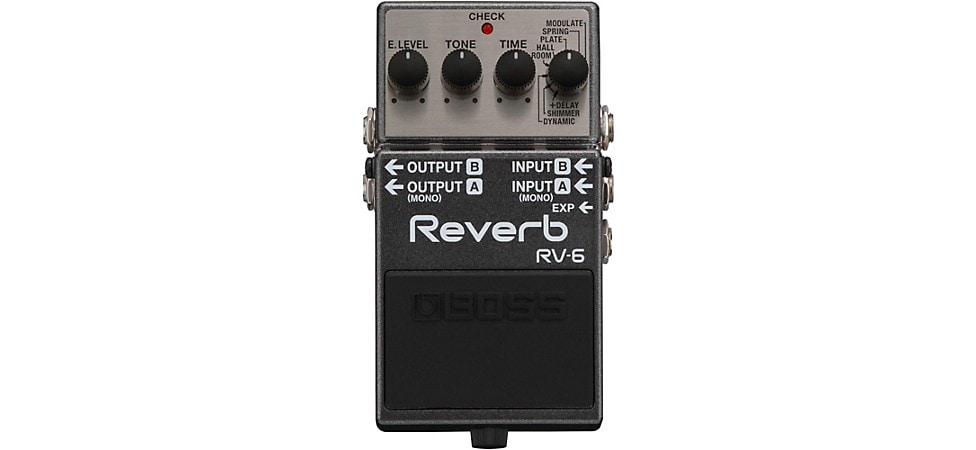
Pictured: BOSS RV-6 Digital Reverb
BOSS upended the playing field two years later when it introduced the digital RV-2. Guitarists could select from Room, Hall, Plate, Delay and Gate modes. Effect Level, pre-EQ and a Time knob for dialing in reverb tails gave players enormous sound-shaping options.
By the late 1980s, multi-effects pedals were packing huge palettes of sound-shaping effects into their compact form factors. Having multiple flavors of reverbs, echoes and delays, along with a vast array of other modulation-based effects under one’s foot, was becoming the new norm.
BOSS continued to play a leading role developing guitar pedals with ever-expanding capabilities. The RV-3 reverb pedal, with an all-new DSP onboard, was introduced in 1994. Combining four reverb modes and three delay modes, it opened up amazing sonic potential. An additional four modes combined delay with room, hall or plate reverb types for some staggering effects.
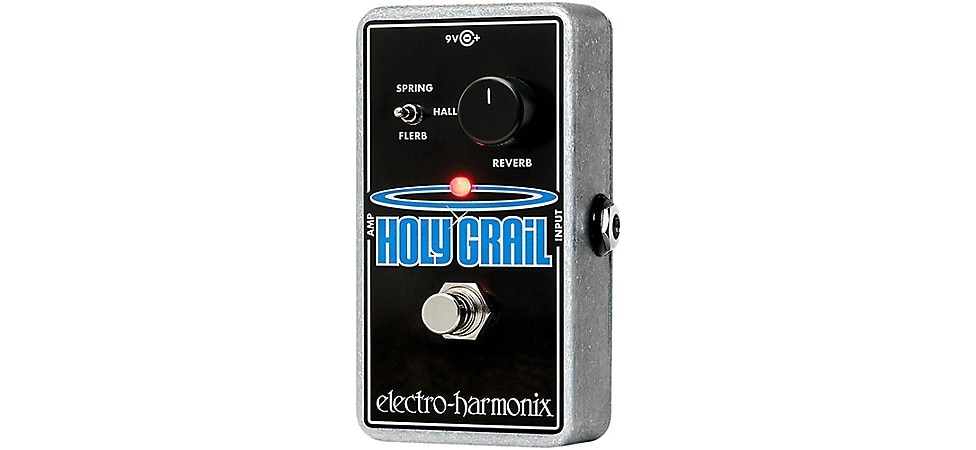
Pictured: EHX Holy Grail Nano
Continuing from the 1990s to today, the Electro-Harmonix Holy Grail became a must-have in many guitarists’ rigs. Its deadly accurate spring reverb sounds, spacious hall settings and mashup of reverb with flanging has ensured its longevity. Today, EHX offers the Holy Grail Nano, offering the legendary sound of the original in a more compact footprint.
What is Convolution Reverb?
One of the limitations of early attempts at software reverbs was their use of algorithms to simulate the way natural reverb works. Based on mathematical formulas, early entries, such as Waves’ TrueVerb, created their own unique reverb sounds. But capturing real-world reverb effects as they behave in actual spaces or realistic virtual environments, involved the development of convolution reverb.
Essentially, convolution reverb receives the input sound to be reverberated, and processes that input with the ambient sound of an actual space. This creates the illusion that the original signal was recorded in that space. Without getting into all the details, convolution reverb uses a process called impulse response to capture the audio dynamics of the space to be modeled. Using a broadband sound, such as a starter's pistol, allows the capture of a wide range of frequencies and their reflections in that space. These resulting audio files, known as Impulse Responses (or IR for short) are then used to simulate the reverb of that exact space.
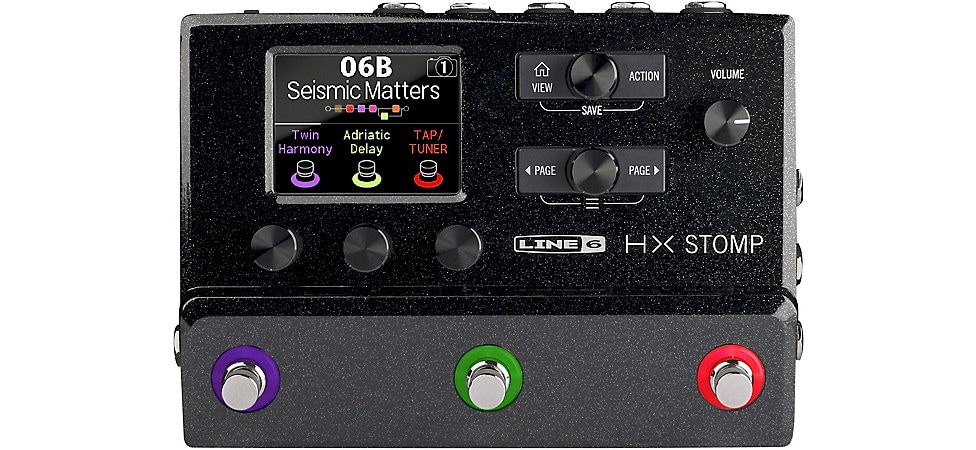
Pictured: Line 6 HX Stomp
The Line 6 HX Stomp, among its many powerful features, allows you to load IR data to craft your effects in whatever virtual environment you choose. Combined with over 300 models and effects from other Line 6 gear, the HX Stomp is both a powerhouse performance tool and an intuitive interface to craft your guitar tone.
In Closing
Today’s musicians have an enormous arsenal of tools at their disposal for creating reverbs. The many choices from names like BOSS, Electro-Harmonix, Universal Audio and more serve up everything from classic reverb sounds to sci-fi effects directly from your imagination.The previous decades have not only honed the technology and sound of reverb, they’ve also left us with absolute gems as well, a number of which are still alive and kicking, whether still in production, as algorithms tucked into newer models or even in plug-in format to use in your favorite DAW. Whether your reverb comes from your space, your amp, your pedal or a plug-in, make it yours.







